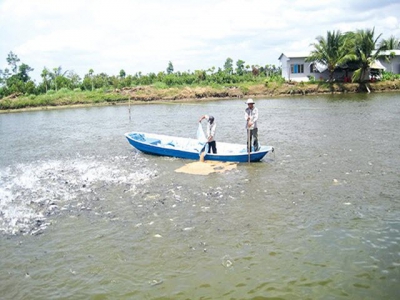How will Vietnams catfish industry fare amid the rise of new rivals?

Vietnam has been advised to increase catfish output to force prices down, to improve competitiveness over other countries. However, this solution has stirred controversy.
The attractive profit (the price climbed to VND36,000 per kilogram in 2018 which brought profit of VND6,000-10,000 per kilogram) prompted China, Indonesia, Bangladesh and India to follow Vietnam to farm catfish.
Vietnam has been warned of the difficulties ahead as it is no longer the only big catfish producer in the world. India, China, Indonesia and Bangladesh have emerged as potential rivals.
Vo Hung Dung, secretary general of Vinapa (Vietnam Pangasius Association), believes that in order to improve competitiveness, Vietnam needs to increase the catfish output to lower the selling prices, rather than lower the output to raise prices.
Vietnam is a big rice exporter, but it can export 6-7 million tons only each year. There are many exporters, including Thailand and India.
However, some experts disagree.
Duong Nghia Quoc, chair of Vinapa, said Vietnam needs to consider the market supply and demand before deciding how much to produce.
Vietnam is a big rice exporter, but it can export 6-7 million tons only each year. There are many exporters, including Thailand and India.
“If Vietnam sells rice at lower prices, its sales would only improve by a little,” he said, adding that this will be the same in the catfish industry.
Tran Huu Hiep, an economist, said Vietnam now has 5,500 hectares of catfish farming area. Farmers made high profits in 2017-2018 when the price went up. In previous years, farmers made modest profits or took losses because of lower sales.
As other countries have also begun farming catfish, the situation has become more challenging.
Hiep said increasing the output must not be the solution to improve the competitiveness of the catfish industry. Instead, Vietnam should produce catfish on the basis of the demand, and focus on products with high added value, such as catfish fillets, collagen and fish oil products.
“The most important factor doesn’t lie in the supply. It would be better to organize production by harmonizing supply and demand. Expanding farming scale and lowering the selling prices is not the right method for sustainable development,” he said.
Catfish prices in the world market fluctuate. At present, though the catfish output has not increased as suggested, the catfish price has begun to slide.
In 2018, the catfish price stayed at high prices of VND35,000-36,000 per kilogram. But the current price is VND24,000-25,000.
Vietnam’s catfish industry made a big leap in the last 20 years with export turnover soaring from $1.65 million in 1997 to $1.7 billion in 2017, amounting to 20 percent of total seafood export turnover.
Related news
 Vietnam’s tuna export to China shoots up
Vietnam’s tuna export to China shoots up Vietnam’s export of tuna to China rocketed by 771 percent in the first two months of this year, making the market the fifth largest importer of Vietnamese tuna
 Costs cause seafood firms to sink
Costs cause seafood firms to sink Rising production costs are harming the competitiveness of Vietnamese seafood products, according to experts. These include the prices of feed, material input
 Fisheries sector urged to build brand
Fisheries sector urged to build brand Deputy Prime Minister Trịnh Đình Dũng has urged the fisheries sector to build a brand with food safety and high quality for seafood products.